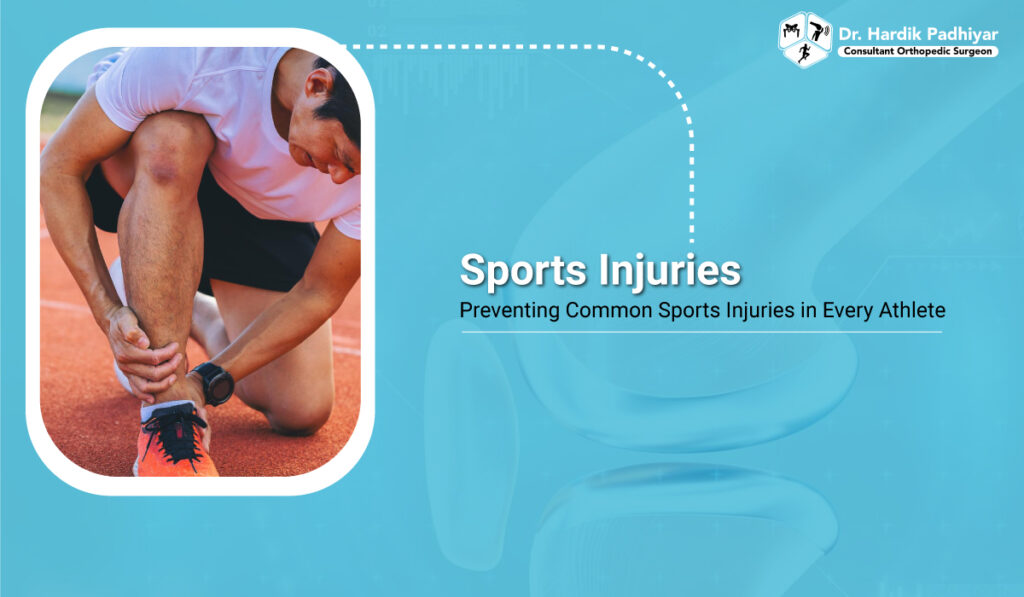Table of Contents
ToggleIntroduction
Engaging in sports is not only a fantastic way to maintain a healthy lifestyle but also a pursuit that brings joy, camaraderie, and personal growth. However, the exhilaration of the game is accompanied by the inherent risk of injuries. Regardless of your level of athleticism, understanding, preventing, and treating common sports injuries is paramount for a sustained and enjoyable sporting experience. In this extensive guide, we’ll delve into various aspects, providing you with actionable insights to keep you in the game, enjoying your passion while minimizing the risk of injuries.
Understanding Common Sports Injuries
Introduction to Common Sports Injuries
Sports injuries encompass a diverse range, varying from acute incidents to chronic conditions that can develop over time. Acute injuries, such as sprains, strains, fractures, and dislocations, often result from sudden complex trauma, while overuse injuries manifest gradually due to repetitive stress on specific body parts. Understanding these distinctions is essential for both prevention and effective treatment.
Causes of Sports Injuries
Inadequate Warm-up and Stretching
Insufficient warm-up and stretching routines remain primary contributors to sports injuries. A detailed exploration of the physiological benefits of warming up and stretching is crucial, illustrating how these practices enhance flexibility, improve blood flow, and reduce the likelihood of injuries.
Overtraining
The pursuit of athletic excellence often leads to overtraining, a risk factor that can result in fatigue, weakened immune function, and increased susceptibility to injuries. It’s essential to delve deeper into the risks associated with overtraining and emphasize the need for a balanced training regimen that incorporates adequate rest periods.
Poor Technique
The significance of correct form and technique cannot be overstated. Poor technique not only compromises performance but also increases the risk of injuries. Providing practical tips and insights into maintaining proper form during various sports activities is essential for athletes at all levels.
Types of Sports Injuries
Acute Injuries
Acute injuries are often the result of sudden, traumatic incidents during sports activities. From fractures to dislocations, immediate care is crucial to mitigate damage and expedite recovery. Understanding the specific first aid measures for different acute injuries can make a substantial difference in outcomes.
Overuse Injuries
Overuse injuries, on the other hand, develop gradually over time due to repetitive stress on specific areas of the body. A comprehensive examination of common overuse injuries, such as tendonitis and stress fractures, is essential. Recognizing early signs and implementing adjustments to training routines can prevent these injuries from escalating.
Sports Injuries Prevention
Proper Conditioning
An in-depth exploration of the role of proper conditioning in injury prevention is warranted. Strength and flexibility training tailored to individual sports and activities are vital components of an effective injury prevention program. Providing specific exercises and regimens for different sports can guide athletes toward optimal physical preparedness.
The Significance of Protective Gear
The significance of utilizing suitable protective equipment cannot be emphasized enough. Whether it’s helmets, pads, or braces, each sport has specific gear designed to minimize the risk of injuries. Detailing the purpose and correct usage of such gear for various activities enhances athletes’ understanding of their role in injury prevention.
Smart Training Techniques
Smart training involves a gradual increase in intensity and duration, minimizing the risk of overexertion and stress-related injuries. Incorporating cross-training techniques not only diversifies workouts but also helps balance muscle development, reducing the strain on specific body parts.
Risks Associated with Sports Injuries
Beyond the immediate physical impact, there are long-term consequences associated with untreated or recurring injuries. Chronic pain, reduced athletic performance, and even psychological effects are potential risks. Raising awareness about these risks reinforces the importance of proactive injury prevention measures.
Diagnosis of Sports Injuries
Accurate diagnosis is the cornerstone of effective treatment. A detailed examination of the diagnostic process, including imaging techniques like X-rays and MRIs, as well as physical assessments by orthopedic specialist, ensures athletes understand the importance of seeking professional medical advice.
Sports Injuries Treatment
Early Intervention
Immediate steps following an injury significantly influence the recovery process. This section should offer a detailed guide on the initial steps to take, including rest, ice, compression, and elevation (R.I.C.E.), and stress the importance of seeking prompt medical attention for a thorough evaluation.
Orthopedic Solutions
Expanding on orthopedic solutions, both surgical and non-surgical, ensures athletes are well-informed about potential treatment options. Discussing the role of physical therapy and rehabilitation in the recovery process emphasizes the importance of a holistic approach to treatment.
Rehabilitation
The significance of rehabilitation extends beyond recovery; it plays a crucial role in preventing recurring injuries. Detailing the types of exercises and therapies involved in rehabilitation programs provides a comprehensive understanding of the ongoing commitment to recovery.
Conclusion
In the dynamic world of sports, injury prevention and personalized care are crucial. Dr. Hardik Padhiyar, a renowned orthopedic surgeon in Ahmedabad, provides expert guidance for both treatment and tailored injury prevention. With his support, athletes can play safe, stay strong, and enjoy a lasting and fulfilling athletic journey.






